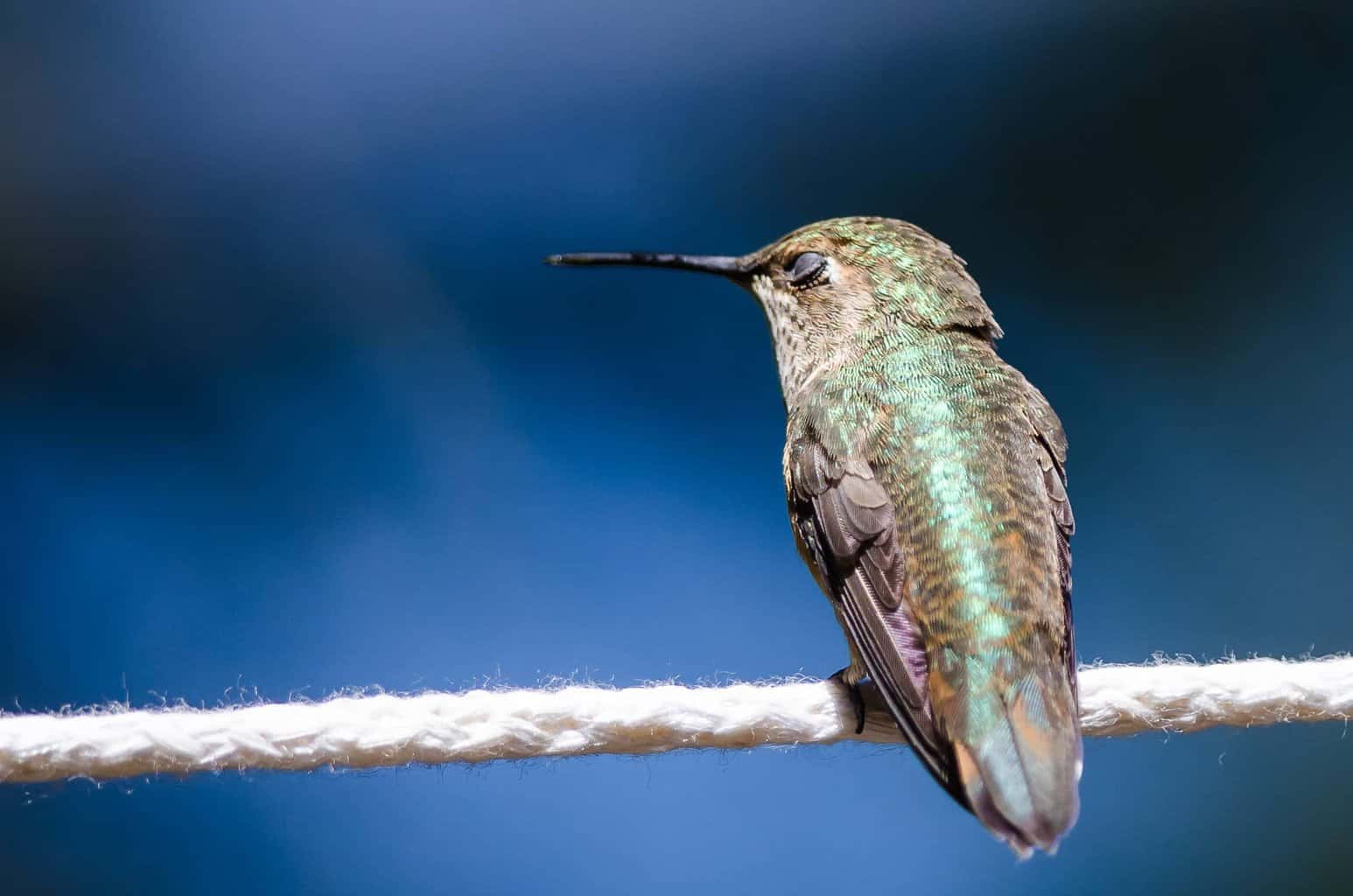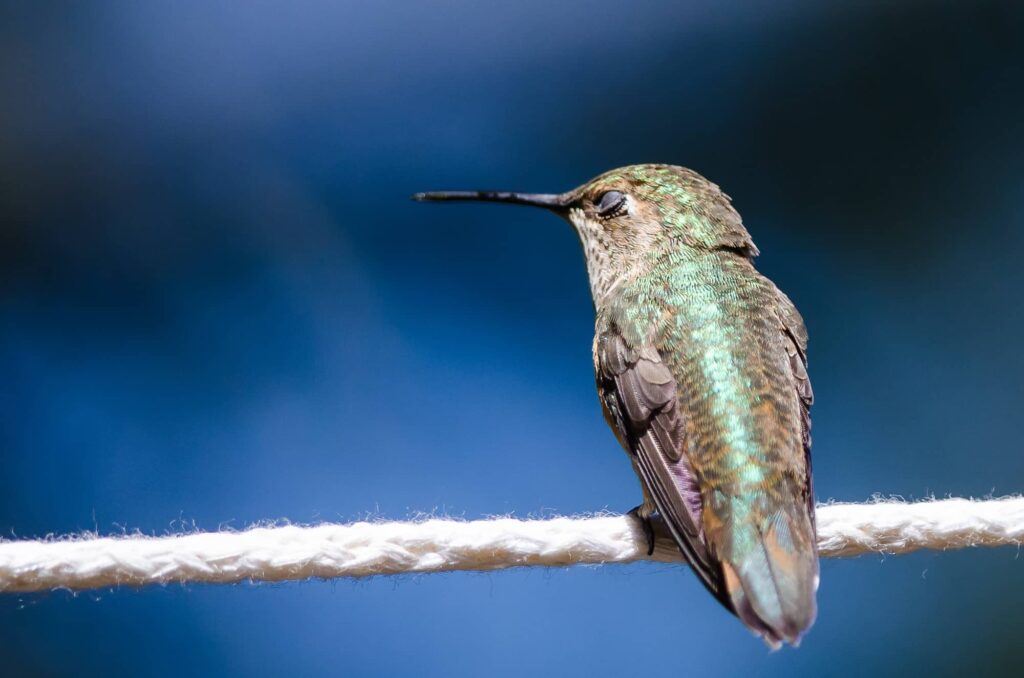If you’ve seen hummingbirds in your garden over the summer months, you may be wondering what happens to those birds in winter. Do hummingbirds hibernate? The answer is not as clear-cut as you might think.
Hummingbirds of different species have many strategies to help them make it through the winter months. Some will stay north in winter and enter a state of torpor at night, but many species are migratory and will head south to warmer climes for the winter months.
Do Hummingbirds Hibernate in Winter?
Though scientists believe that some species spending the winter in colder climes enter a state called torpor at night and undergo periods of mini-hibernation, it isn’t the deep sleep of true hibernation since the birds will break out of this state each day and not slumber the winter away entirely.
How Can Hummingbirds Cope With Cold Temperatures in Winter?
Hummingbird’s habits in winter depend on which American hummingbird species we are talking about. Some American hummingbirds don’t have to contend with cold temperatures because they migrate south. In the south of the US, temperatures may also stay warm enough to pose no issue to these birds.
Do All Hummingbirds Migrate For Winter?
Some people believe that all hummingbirds migrate, but this is not the case. Many species remain in the same spot year round in warmer southern climates.
Some American hummingbird species, such as Anna’s hummingbird, do not migrate. Others, like the Ruby-throated and Rufous hummingbird, will usually migrate south from more northern areas, but not all individuals will do so.
Due to age or ill health, some will be unable to make the journey. It is also increasingly common for hummingbirds to remain in milder regions of the US over the winter months, partly because climate change is making for warmer winters in many parts of the nation.
Where Do Hummingbirds Go in Winter?
Here are the winter habits of some of the most common US species of hummingbird.
Ruby-throated Hummingbird
Ruby-throated hummingbirds mostly fly south to Mexico and Central American countries. But they can also be found over winter in parts of the Southern US. Since they head to warmer climes in winter, they are not known to hibernate or enter a state of torpor at night.
Rufous Hummingbirds
Rufous hummingbirds tend to head southward starting in July, traveling south through the Rockies to overwinter in warmer climes, typically in Mexico, though sometimes also in the southern US.
Black-Chinned Hummingbird
Black-Chinned Hummingbirds usually occupy a large area of the Western US over summer. But when winter arrives, most travel south in fall to western Mexico or overwinter along the Gulf Coast.
Allen’s Hummingbirds
Allen’s hummingbirds head into California and Oregon early in the year and remain for the summer. However, there are two subspecies. One of these subspecies (Selaphorus sasin sasin) tends to migrate south in winter to Central Mexico. The other (Selaphorus sasin sedentarius) stays in southern California year-round.
Anna’s Hummingbirds
Anna’s Hummingbirds are different from most North American hummingbird species because they do not tend to migrate. They remain in the same area for summer and winter – moving only short distances to seek additional food sources.
Remember, however, that though these are the usual habits of these birds, hummingbirds do not migrate in flocks but operate as individuals. And so, it is not uncommon for individuals of each species of hummingbird to deviate from the typical winter habits.
Calliope Hummingbirds
Calliope Hummingbirds are the smallest birds in North America, but these birds can survive cold summer nights even at high elevations in the Rockies despite their tiny size. Most migrate from as far north as Canada down to southern Mexico for the winter months, though some remain in the southwestern US for winter.
Costa’s Hummingbirds
Costa’s hummingbirds breed in the southwestern US. In winter, they tend to fly south as far as possible. Still, most stay in these warmer regions of the US, in California and Arizona, Baja California, and other parts of Western Mexico.
Buff-Bellied Hummingbirds
These hummingbirds can be found in Southern Texas and the Gulf Coast states throughout the whole year – including the winter months. They can cope with the temperatures and conditions found here, even during the coldest part of the year.
What Do Different Hummingbirds Do in the Winter?

Hummingbirds That Stay Further North or in Colder Areas In Winter:
Recent studies have shed a little more light on hummingbird sleep patterns. Researchers have observed six South American hummingbird species which spend the winter in the high Andes. High-elevation Andean hummingbird species have been found to enter a nighttime state called torpor.
During this period of deep ‘sleep,’ hummingbird species drop their internal temperature dramatically to conserve energy. Their heart rate and respiration slow, and the birds can even end up hanging upside down in branches, clinging on with their feet.
Astonishingly, during a period of torpor, the bird’s body temperature can drop from 104°F (40°C) to 65°F (18°C). Its heart rate can slow from 1,260 beats per minute to 50 to 180 beats per minute. (These figures relate to the Blue-throated hummingbird, but other species have also been shown to have similar physiological changes.)
According to studies by Adam Hadley, an ecologist in Oregon State, birds that stay in the North of the US or migrate north in winter also display these periods of torpor. So, while hummingbirds won’t hibernate all winter long, they will enter this energy conservation mode at night before ‘waking up’ in the morning each day.
This strategy allows these birds to cope with colder weather conditions and less food availability in the coldest months.
Helping Hummingbirds in Winter
If you spot hummingbirds in your garden in winter, it is important to do all you can to help them make it safely through the coldest months:
- Garden organically, so there is a healthy insect population in your garden through as much of the year as possible.
- Plant nectar-producing plants to provide food for hummingbirds over as much of the year as possible.
- Keep hummingbird feeders up throughout the year as long as hummingbirds are present. Don’t remove feeders until you have no longer seen any hummingbirds for a couple of weeks.
- As hummingbirds sleep at night, you should bring the feeder inside overnight to prevent freezing.
- Create layered, dense plantings with plenty of shrubs and trees to provide perches and ensure that hummingbirds can find shelter when the weather is bad.
Hummingbirds That Migrate South for Winter
If you live in the southern, milder parts of the US, the birds you see in winter are less likely to need to conserve their energy by entering into a state of torpor at night. Temperatures will remain higher in the winter, and there will likely still be plenty of food around.
While some birds may remain in northern areas and enter a state of torpor (like short periods of hibernation), remember that most hummingbirds will migrate south. But don’t worry, they should return the following spring.

